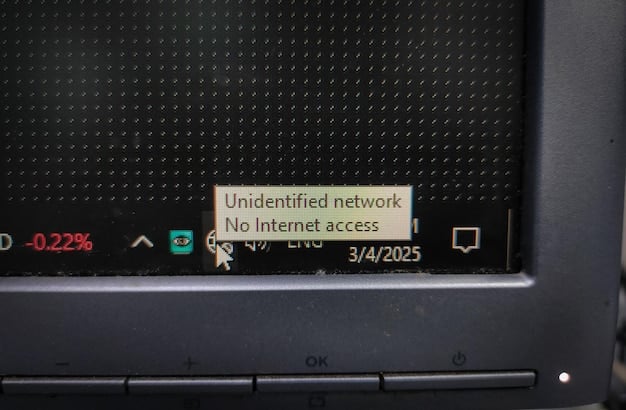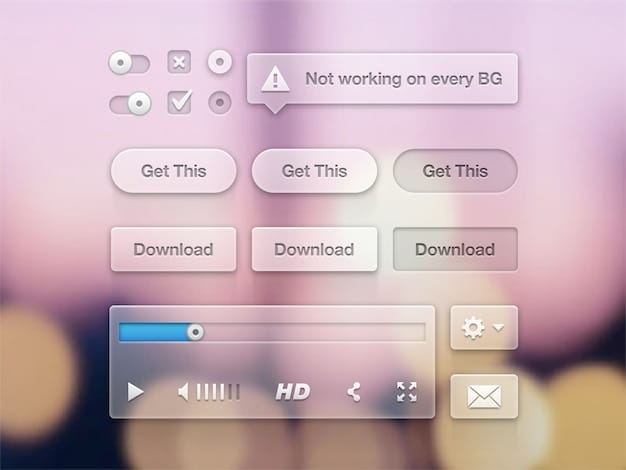US streaming accessibility: Enhancing the viewing experience for all audiences

Advertisements
US streaming accessibility features are increasingly available across major platforms, offering tools like closed captions, audio descriptions, and screen reader compatibility. These features are designed to enhance the viewing experience for individuals with diverse needs, making entertainment more inclusive.
By integrating these tools, streaming platforms help ensure that viewers with visual, auditory, or cognitive impairments can engage with content just as easily as anyone else. US streaming accessibility is becoming a standard expectation among audiences, reflecting broader societal commitments to equity and inclusion.
Streaming services have revolutionized how we consume entertainment. However, these platforms also carry a responsibility to ensure all viewers can enjoy content equally. The focus on US streaming accessibility ensures that people with disabilities are not excluded from mainstream entertainment and can participate fully in cultural conversations surrounding popular media.
Anúncios
Understanding accessibility features in streaming services
Accessibility features are essential for ensuring that individuals with disabilities can fully enjoy streaming content. These features cater to a wide range of needs, including visual, auditory, and cognitive impairments, and they are central to modern media platforms.
US streaming accessibility includes tools that adapt content and interfaces to the specific requirements of diverse users. Streaming platforms provide various solutions to enhance accessibility.
For instance, closed captions display dialogue and sound effects visually, benefiting viewers who are deaf or hard of hearing. Audio descriptions narrate visual elements, providing essential context for blind or visually impaired viewers.
Anúncios
Additionally, screen reader compatibility allows visually impaired users to navigate interfaces efficiently. Together, these tools create a more inclusive environment, highlighting the importance of US streaming accessibility across the entertainment industry.
The importance of inclusivity in streaming
Inclusivity in streaming is more than providing accommodations; it is about offering equal access to entertainment and information for everyone. Streaming services have a moral and legal responsibility to ensure that all audiences, including those with disabilities, can engage fully with their content.
Platforms that prioritize US streaming accessibility demonstrate a commitment to social responsibility while also expanding their reach to underserved audiences. Ensuring inclusivity requires thoughtful design, regular updates, and user-friendly interfaces.
When platforms integrate US streaming accessibility effectively, viewers with disabilities experience content in ways that are meaningful, engaging, and comparable to those without impairments. Ultimately, this approach fosters a sense of belonging and respect for diversity, which benefits the entire streaming ecosystem.

Common accessibility features explained
- Closed captions: Provide textual representations of dialogue and sound effects, helping deaf and hard-of-hearing users follow the storyline. Platforms can customize captions’ appearance to improve readability, an essential component of US streaming accessibility.
- Audio descriptions: Offer narration that describes visual scenes, ensuring blind and visually impaired users understand the full context of content. High-quality audio descriptions are a key pillar of US streaming accessibility.
- Screen reader compatibility: Allows users to navigate streaming interfaces using screen reader software, ensuring independent access. This feature represents an important aspect of US streaming accessibility.
- Keyboard navigation: Supports navigation through keyboard-only controls, benefiting users with motor impairments and emphasizing US streaming accessibility in interface design.
These features illustrate the variety of options platforms provide to ensure accessibility. Streaming services that prioritize US streaming accessibility allow viewers with different abilities to enjoy content without compromise.
1. Netflix accessibility features
Netflix has emerged as a leader in implementing accessibility features, reflecting the growing emphasis on US streaming accessibility. The platform offers tools such as caption customization, audio descriptions, and screen reader compatibility.
These features enable Netflix to cater to a wide audience while meeting the needs of viewers with disabilities. By integrating these tools seamlessly, Netflix enhances the viewing experience for all users.
For example, the platform’s approach to US streaming accessibility demonstrates how major services can balance entertainment quality with inclusivity, creating an environment where all viewers feel accommodated.
Caption customization on Netflix
Netflix allows users to adjust the appearance of closed captions, including font size, color, and background. This customization ensures captions are readable for viewers with visual impairments or reading difficulties, reflecting the platform’s commitment to US streaming accessibility.
Additionally, these settings help viewers who prefer specific visual layouts for comfort or accessibility reasons. The ability to personalize captions is not just a convenience; it is a vital accessibility feature that directly impacts comprehension and engagement.
By emphasizing US streaming accessibility in caption settings, Netflix ensures that every user can follow content effectively, regardless of their needs.
Audio descriptions availability
Netflix provides a growing library of content with audio descriptions, offering narrations that describe visual elements. This feature is particularly beneficial for blind and visually impaired viewers, improving their understanding and enjoyment of the media.
Audio descriptions exemplify Netflix’s dedication to US streaming accessibility, as they provide essential context that might otherwise be inaccessible.
Netflix screen reader compatibility
Netflix is designed to work with screen reader software, allowing visually impaired users to navigate the platform independently. Screen readers provide auditory feedback about menu options, playback controls, and content navigation.
This integration is a practical demonstration of US streaming accessibility, enabling users to interact with the platform effectively.
2. Hulu accessibility features
Hulu prioritizes accessibility features to create an inclusive viewing experience, emphasizing US streaming accessibility across its platform.
By offering customizable captions, audio descriptions, and keyboard navigation, Hulu ensures that all viewers, regardless of ability, can enjoy content without obstacles.
Hulu’s caption options
Hulu allows users to adjust captions’ font, size, color, and background, supporting readability and comfort. This flexibility is an important component of US streaming accessibility, as it empowers users to tailor content presentation according to their individual needs.
Audio description support on Hulu
Hulu offers audio descriptions for select titles, providing narration that explains visual elements on screen. This feature significantly enhances understanding for blind and visually impaired users, highlighting Hulu’s commitment to US streaming accessibility.
Navigating Hulu with keyboard
Hulu supports keyboard-only navigation, allowing users to control playback, browse content, and manage settings without a mouse. Keyboard navigation is essential for individuals with motor impairments and reinforces US streaming accessibility throughout the platform.
3. Amazon Prime Video accessibility features
Amazon Prime Video offers a wide array of accessibility tools to create an inclusive viewing experience. These features include closed captions, audio descriptions, and screen reader compatibility, reflecting the growing industry emphasis on US streaming accessibility.
By integrating these tools seamlessly, Prime Video ensures that viewers with disabilities can navigate the platform, follow storylines, and engage with content on equal footing with other audiences.
Prime Video also focuses on continuous improvement. By regularly updating accessibility options, the platform exemplifies how major streaming services can lead in promoting US streaming accessibility while maintaining high-quality entertainment experiences for all viewers.
Closed captions on Prime Video
Amazon Prime Video provides closed captions for nearly all of its content. Users can customize the font size, color, and background, ensuring that captions are readable for viewers with varying visual needs.
This attention to detail highlights Prime Video’s commitment to US streaming accessibility, offering flexibility that improves comprehension and viewing comfort.
Audio descriptions on Prime Video
Prime Video offers audio descriptions for select titles, providing narrations that describe key visual elements on-screen. This feature is invaluable for blind and visually impaired users, offering context that would otherwise be inaccessible.
Audio descriptions are a core component of US streaming accessibility, demonstrating the platform’s dedication to inclusivity.
Prime Video screen reader support
Amazon Prime Video is compatible with screen readers, allowing visually impaired users to navigate menus, search for content, and access playback controls independently.
By supporting screen reader technology, Prime Video strengthens US streaming accessibility, ensuring that all users can enjoy an effortless and autonomous viewing experience.

4. Disney+ accessibility features
Disney+ is committed to providing an accessible streaming experience for all users, reinforcing the importance of US streaming accessibility. The platform combines customizable captions, audio descriptions, and compatibility with assistive technologies to cater to viewers with diverse needs.
Disney+ also emphasizes accessibility in its content production, ensuring that new releases and legacy titles are increasingly equipped with features that uphold US streaming accessibility standards.
Disney+ caption options
Disney+ offers customizable captions that allow users to adjust font size, color, and background. This ensures readability for viewers with visual impairments and supports a comfortable viewing experience.
By enabling caption customization, Disney+ reinforces US streaming accessibility, making its content approachable for everyone.
Audio descriptions on Disney+
Disney+ provides audio descriptions for a growing selection of titles, narrating visual details to enhance the experience for blind or visually impaired users. This feature is crucial for promoting US streaming accessibility, allowing all viewers to understand the visual storytelling fully.
Assistive technology support
Disney+ integrates compatibility with assistive technologies such as screen readers and voice navigation tools. This ensures that users with a range of disabilities can independently access content.
The ongoing enhancements in assistive technology reflect Disney+’s commitment to US streaming accessibility, fostering a more inclusive digital entertainment environment.
5. HBO Max accessibility features
HBO Max prioritizes accessibility, offering robust tools such as closed captions, audio descriptions, and ongoing platform improvements. These features demonstrate the company’s commitment to US streaming accessibility, ensuring that all viewers, regardless of ability, can engage with its content.
The platform continually evaluates user needs and technological advancements to enhance accessibility, reflecting an industry-wide push toward fully inclusive streaming experiences.
HBO Max caption settings
HBO Max allows viewers to adjust caption settings, including font, size, color, and background. This customization ensures captions are readable and comfortable for a wide range of viewers.
Flexible captioning options are essential for supporting US streaming accessibility, enhancing both comprehension and enjoyment.
Audio descriptions on HBO Max
HBO Max provides audio descriptions for select content, enabling blind and visually impaired users to understand scenes and follow storylines.
By integrating these narrations, HBO Max demonstrates a strong commitment to US streaming accessibility, creating a richer and more inclusive viewing experience.
Ongoing accessibility improvements
HBO Max continually updates its platform to improve accessibility, incorporating user feedback and the latest assistive technologies. These updates reinforce US streaming accessibility, ensuring that new and existing content remains accessible to a diverse audience.
HBO Max’s proactive approach highlights the importance of accessibility in the evolution of streaming services.
| Key Feature | Brief Description |
|---|---|
| 💬 Closed Captions | Textual representation of dialogue and sounds. |
| 🎧 Audio Descriptions | Narration describing visual elements on screen. |
| ⌨ Keyboard Navigation | Platform navigation using only a keyboard. |
| 🤖 Screen Reader Support | Compatibility with screen reader software. |
Frequently Asked Questions (FAQ)
▼
Accessibility features on streaming services are tools and settings designed to make content accessible to people with disabilities. These features include closed captions, audio descriptions, keyboard navigation, and screen reader compatibility, for example.
▼
To enable closed captions on Netflix, go to your account settings. Look for the “Subtitle Appearance” section. Then customize the font, size, and color of the captions to your preference. These steps make the US Streaming Service Accessibility Features: Options for Viewers with Disabilities come to reality.
▼
Audio description is narration that describes visual elements on screen, providing context for blind and visually impaired viewers. Narrators explain the scene as it plays out, allowing for viewers to have a complete sense of the media they are experiencing.
▼
Many streaming services are working to improve accessibility, each with unique settings. Netflix and Hulu both offer customization options for closed captioning. HBO Max also provides audio descriptions on a selection of titles for the viewers.
▼
Accessibility options are important because they are a key to inclusivity for the platform. People with disabilities can enjoy viewing experiences with accessibility options and all viewers deserve to participate in media and art.
In conclusion, US streaming accessibility features options for viewers with disabilities are crucial for creating an inclusive viewing experience. Streaming services are actively implementing features like closed captions, audio descriptions, and screen reader compatibility to cater to diverse needs.
By understanding and utilizing these features, viewers with disabilities can fully enjoy the vast array of content available on streaming platforms, while improving the experience for all viewers.





